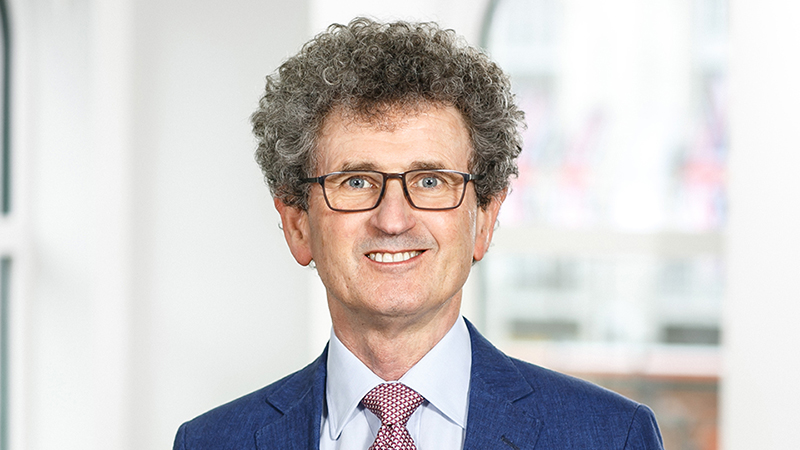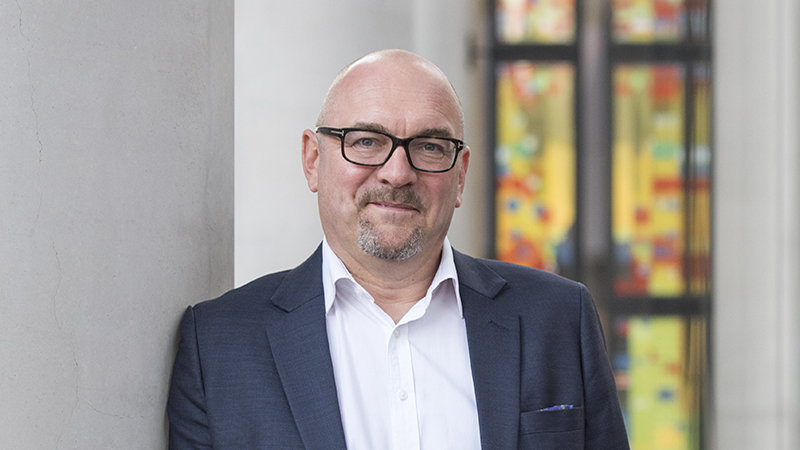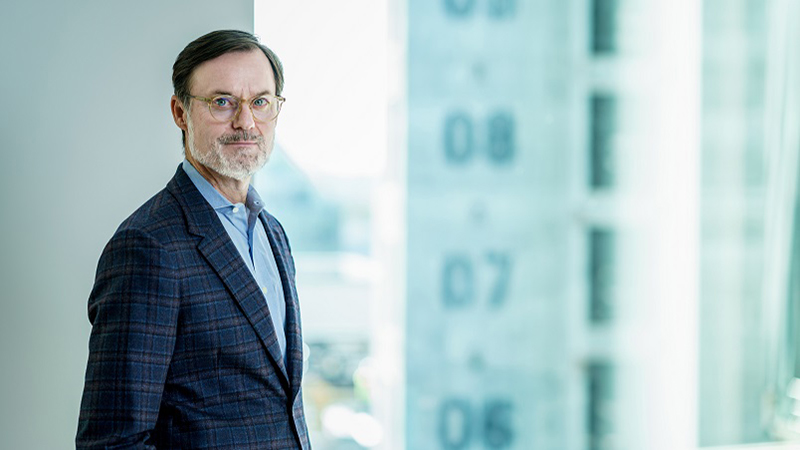Redwheel today (21 October) took on board a trio of managers to set up its new Emerging Markets Impact Opportunities strategy, which they have already been managing for six years at different firms.
Nandita Sahgal, James Kinsbrook and Raviraj Salecha’s investment strategy centres on mid-market private infrastructure companies that are driving the energy transition in emerging markets.
Redwheel CEO Tord Stallvik (pictured) noted that a lot of asset managers have shown interest in profiting from the decarbonising and electrification of emerging markets, but he was attracted to the new team’s unique approach to a popular investment theme.
They mostly specialise in South Asian markets such as India, the Philippines and Vietnam, unlike most funds in the space which have large allocations to places like China, which have become overly competitive and difficult for new entrants to participate in.
See also: Is the ECB ‘behind the curve’ with ‘hesitant’ interest rate cut?
Plus, the team’s focus on mid-cap companies gives the firm exposure to an overlooked area of the market not captured by most of its peers, according to Stallvik.
“Nandita and her team are really focused on the mid-market space, which is too small for the big guys to spend time on – but it’s the biggest opportunity,” he said.
“Most projects throughout emerging markets aren’t going to be mega projects, they’ll be mid-sized projects, and it’s trillions that need to be spent here. Only the tip of the iceberg has happened so far, so it’s a huge opportunity.”
A natural next step
Rather than chasing popular investment themes, Redwheel has often developed its specialty in niches such as sustainability and emerging markets.
So when Sahgal and her team came along with a strategy that combined the two, it seemed like the natural next step Stallvik was searching for.
“In a more competitive environment, you need to focus on the things you’re really good at,” he said. “If you waste time on things you’re not good at, it takes away attention and it takes resources, so you can’t afford to do that. So it’s both opportunity and necessity that’s driving our focus.
“There’s definitely challenges in the industry, like the fee and cost pressures related to passives, that aren’t going away, but I think the world needs investment strategies that give you something different and help you diversify your portfolio. You need to be picking areas where you have real competitive advantage.”
Stallvik had considered launching strategies in sectors such as technology that have driven equity market returns for many years, but found that they were very difficult to get a foothold in.
With so many players investing in the space, it is challenging for a new entrant to bring something new to the table. Stallvik concluded that it made more sense to build a dominant positions in niche spaces.
“A few years ago, we thought about how we didn’t have an investment team focused on the kind of mega-cap tech trade that has driven so much of people’s interest in the last decade. And whilst it would have been great to have that – because clearly many people have done very well in that space – we would have been difficult to compete against very large competitors, and we also felt we’d be a bit late to the party,” he explained.
“So we left that aside and thought about how we could provide a real opportunity over the next few decades, and we really felt that was in more thematically specific sustainable strategies. I feel very confident having a business that’s focused away from that and on more specific areas.”
‘Harder than ever to start a new asset management business’
However, Stallvik said there was a time when enterprising managers with an effective strategy such as Sahgal would rather have set up their own boutique. Yet stifling regulation on new asset managers has made it too challenging to go it alone.
“It’s harder now to start a new asset management business than it’s ever been,” Stallvik said. “The ingredients you need to do it well are so much more extensive than it used to be.
“You still have a lot boutiques in the US where regulation is lighter, but in the UK and Europe, it’s very hard and costs a lot of money to run an asset management business because of the enormous amount of regulation.”
Most regulation is aimed at large financial institutions with big balance sheets, but there is no distinction in the rules for smaller firms. Start-up boutique asset managers therefore have some very high hurdles to jump before they even begin operating.
With such demanding requirements to even pass the starting line, innovative early-stage asset managers instead seek out the support of established firms such as Redwheel, according to Stallvik.
See also: Could fixed income markets suffer another double-digit drawdown?
“Some of it is well meaning, so I don’t think it’s necessarily all bad, but it does mean that in order to be operating in these jurisdictions, you need to be able to invest more in that support infrastructure,” he said.
“It does create a bit of an opportunity for us though, because we provide a home for people who would ideally like to set up themselves, but recognise that doing it completely on their own is difficult. So we give them the autonomy to run their own investment businesses, but just in partnership with Redwheel.”
In fact, Stallvik prefers teams who have already tried to set themselves up independently and understand the challenges in doing so. Without the administrative distractions involved with running a business, they can focus on their primary skill set – running a successful portfolio.
“A key ingredient we look for is teams that have developed an appreciation for how hard it is to do it completely on your own,” Stallvik added.
“Ideally, we want people who are real entrepreneurs, who want to have their own business, but appreciate that if you’re an investor with a clear investment strategy, the best thing for you is to actually focus all your energy on doing – not to spend half your day talking to your head of departments about how the business itself should be run.”
Where to next?
Looking at markets today, Stallvik sees some of the greatest investment opportunities in global smaller companies. They are overlooked, require a specialist knowledge, and have a sizable runway for growth – he simply hasn’t found the right team he wants to take on yet.
“We’re looking at areas where it’s more difficult for passives to work well, and one very obvious area is smaller companies,” Stallvik said. “There are thousands of them around the world that are not getting much research coverage and not getting as much attention, so it’s a market which is far less efficient.
See also: ‘SDR implementation is far more challenging than we ever anticipated’
“We’ve spoken a lot about introducing a global small-cap strategy and we’ve talked to lots of people about that, but when we bring in a new team to join us, they need to have a very clearly identified investment process and position in the market.
“Because every time we do something like this, we’re essentially starting a new business. So will we one day have a small-cap capability? That’s very possible. But it has to be the right team.”










